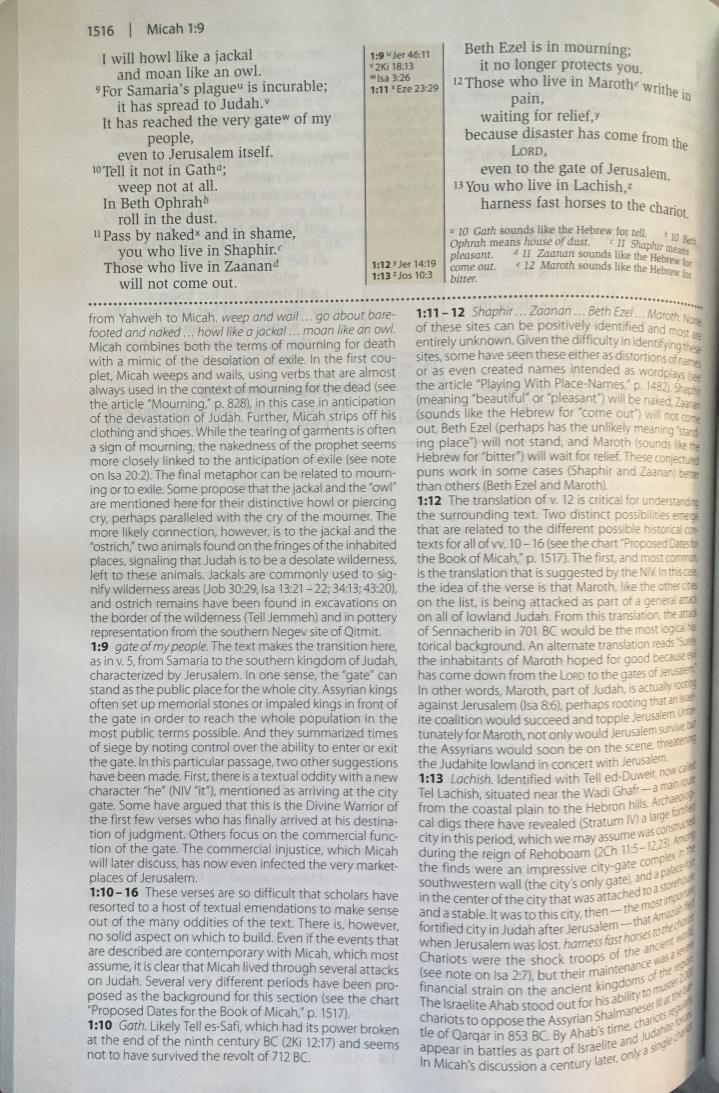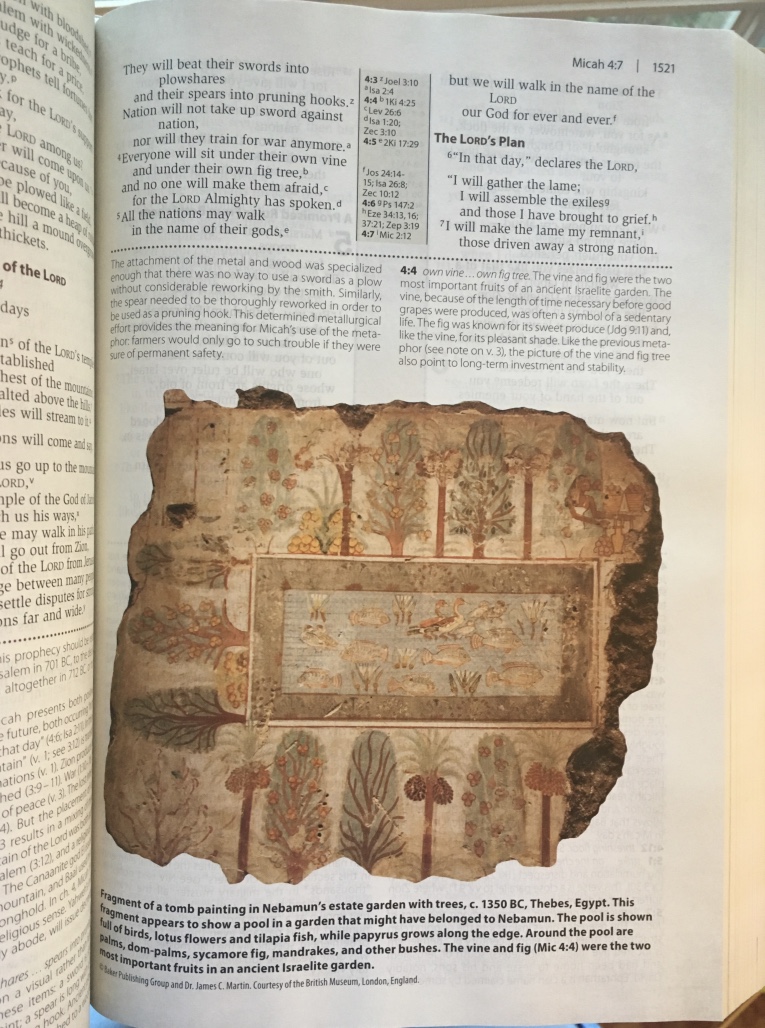
The aim of Zondervan’s just-released NIV Cultural Backgrounds Study Bible is simple:
This study Bible has been purpose-built to do one thing: to increase your understanding of the cultural nuances behind the text of God’s Word so that your study experience, and your knowledge of the realities behind the ideas in the text, is enriched and expanded.
John H. Walton and Craig S. Keener are the editors. Walton oversaw The Zondervan Illustrated Bible Backgrounds Commentary: Old Testament (ZIBBCOT), a resource I consult for almost every passage I preach on. Walton also co-wrote the IVP Bible Background Commentary: Old Testament.
Keener has written a page or two in his time, too. Just today I found great help with Ephesians 5:21ff in his IVP Bible Background Commentary: New Testament. (Although some of Keener’s contextual explanations of “submission” and “headship” and slavery did not make their way into this study Bible, where those verses unfortunately received a less nuanced approach.)
Content from both the ZIBBCOT and the IVP Bible Background Commentary finds its way into this study Bible. (As do a couple dozen articles from the NIV Archaeological Study Bible.) As for the 2011 New International Version—used in this volume—I write more about it here.
This definitely-not-compact Bible has more than 10,000 study notes. No, I didn’t count, but check out this page from Micah 1, a chapter which needs a lot of background explanation. The Cultural Backgrounds Study Bible delivers:
The accompanying maps, images, diagrams, and charts are all in color:
Micah’s introduction is fair in presenting a few different viewpoints on dating, and concludes:
The modern reader of Micah should at least be aware of the variety of ways in which different historical backgrounds have made a difference in the understanding of, and even translations of, several difficult passages in the book of Micah.
And it’s not just historical background for its own sake. The authors and editors seem to have the aim of helping the reader understand the text.
Micah 4:4 reads:
Everyone will sit under their own vine
and under their own fig tree,
and no one will make them afraid,
for the Lord Almighty has spoken.
Here is the study note on Micah 4:4:
The vine and fig were the two most important fruits of an ancient Israelite garden. The vine, because of the length of time necessary before good grapes were produced, was often a symbol of a sedentary life. The fig was known for its sweet produce (Jdg 9:11) and, like the vine, for its pleasant shade. …[T]he picture of the vine and fig tree also point to long-term investment and stability.
The Old Testament introductory materials include a helpful “Hebrew to English Translation Chart,” for instances where “there is no English word that corresponds sufficiently to capture the breadth of nuance that the Hebrew word contains. “ It’s a nice addition, and not one I can recall seeing in a study Bible before.
The inclusion of those Hebrew words caused me to be a little surprised, then, that the study Bible missed the opportunity to point out the Hebrew wordplay on Micah’s name in Micah 7:18: “Who is a God like you…?”
So one may still want the larger background commentaries that this study Bible makes use of. However, the Bible is already fairly large, so the level of detail is understandable.
All in all, though it’s difficult to justify yet another study Bible, this one does fill a void, since many study Bibles treat background, but in nowhere near this level of detail.
You can learn much more about the study Bible here. If you want to see some nice shots of the inside of the print edition, check out this post over at Bible Buying Guide. And you can find a couple different versions of the Bible at Amazon here.
AcademicPS and Zondervan set me up with a hard copy of the Bible, as well as electronic access, so I could review it, though this kindness did not influence my objectivity.



Hi, do you think this is a good resource that complements the IVP bible background commentary or is it a repetition of the same material?
It’s not a one-to-one correspondence. You will generally find more detail in the commentary, but because the Bible draws from a couple other sources, too, it may have something additional. Personally, I would be (and am) content with two (or more) good background commentaries.
Thank you very much for the reply. That is good information.
You’re welcome!